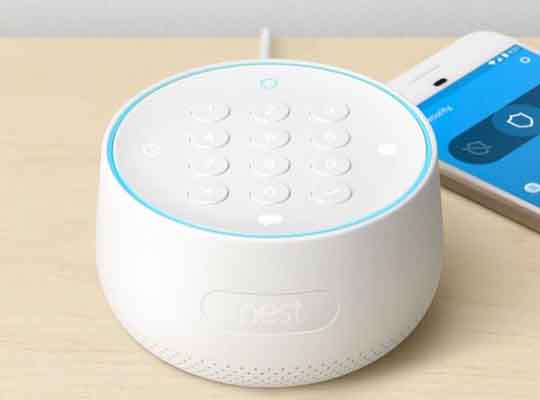Technological developments in home security systems help to deter home burglary and enable a secure environment while we are away. The home security manufacturers are aiming to make their devices cross-functional by interfacing them with different systems.
A few of years ago, I did not know about the Internet of Things (IoT) and home automation. I was comfortable with the traditional method of managing the security of my home, but I always wanted to own a few smart home devices that would keep my mind at peace when I was away. I believed that these smart-home products would be like what can be seen in movies with digital and robotic agents taking care of the chores. That led me to prioritizing security when I considered any devices for my home. As the years passed, technology took a step forward, and wireless solutions became a standard. Because of advanced data analytics, IoT, and emergence of Artificial Intelligence (AI), many innovations today are aimed at making homes smarter, more secure, and more convenient, whether it’s locking the door without using a key or turning lights on and off automatically. It is amazing what home automation can do. Smart home products are a wide concept. Many different product groups can be automatically controlled from anywhere in the world using a smartphone or other network devices such as the smart door lock. Traditional locks and key systems have improved over time and have become smarter, which provides additional security to our homes. Most people would have encountered the digital lock system to access a hotel room, a fingerprint scanner to unlock a laptop, or a keypad to enter an office building. The same mechanism in smart locks promises to keep our homes more safe and secure.
Major players active in smart locks market include Yale smart lock, August Home, Haven lock, Honeywell, Samsung, Vivint Smart Home, etc. These manufacturers have maintained market position with quality maintenance and innovative technology. Smart locks have become smarter by integration with smart devices such as Amazon Echo and Google Nest, enabling voice assistants to manage other actions. Let us consider Google Nest Secure and Yale smart lock as an example.
Motion and Door Detection throughout the Home
The Google Nest Secure (Figure 1) is a simple and an advanced alarming system mainly designed to sense the door’s movement in connected homes. It is harsh on intruders and easy on good people. The Nest Secure system includes a central hub such as Nest Guard, Nest Detects (sensors), which can be placed throughout the home, and Nest Tags (key fob), which are used to arm and disarm the Nest Guard. The Nest Guard has a keypad on top, a motion sensor, and a built-in Google assistant to process voice commands. The Nest Guard connects to the home network via Wi-Fi and communicates with Nest’s mobile app.
Smart Secure System- Working Principle
When a visitor opens/closes the main door, the Nest Guard triggers an alarm by sensing the movement of the person. The Nest Guard is usually placed in the hall so that you do not need a Nest Detect for the main door because it has an inbuilt motion sensor. The Nest Detect can be stuck on a window to know when it opens, on a wall to sense motion in a room, and on a door to sense motion and open/close. The battery-powered Nest Detect directly communicates with the Nest Guard using Nest’s wireless mesh networking technology, Weave, which is the backbone for Google Nest products. Weave security allows secure and reliable interaction between products, apps, and cloud services. Even if the internet goes down, or a power outage occurs, Weave products can continue to work together.
Arming and Disarming
Arming and disarming the Nest Secure alarm system is possible in multiple ways. We can simply hold a Nest Tag on the Nest Guard, use the Nest app on our smartphone, or enter a traditional passcode on the Nest Guard. The Quiet Open feature in the Nest app enables us to tap a button on the Detect itself to disarm just a single door. These tags are perfect for children or aging residents. We can also set temporary access on the Tags that will allow visitors to enter only during scheduled times. The Nest Guard comes with a backup battery that keeps it active for at least 12 hours in case it gets unplugged or whether home power fails, making it a reliable system for homes. The integration of the connected home system with a smart lock system is the best way to enhance the home security system. The Yale smart lock system works best for connected homes.
Connected Home with Secure Lock
Google Nest collaborated with the lock manufacturing company Yale to develop a battery-powered, tamper-proof, and key-free deadbolt named Nest x Yale lock for smart homes. A Nest Guard must already be installed and connected to the Nest app for
the Nest x Yale lock to work with the app. This is because the Nest x Yale lock uses Weave communication protocol to connect to the Nest Guard without directly connecting to Wi-Fi. This locking system performs actions such as locking the door from our phone, sending alerts when someone tries to tamper the lock or when the battery is running low.
We can tell the Nest Guard assistant to lock the door and even set a routine, for example, when we say “Goodnight,” the door should automatically lock itself. However, we cannot unlock the system using voice commands. That precaution is in place to prevent an unauthorized person from unlocking the door with their voice. The Nest x Yale system offers many other features
such as security controls, adding other devices, etc. They can be added to the home through the single Nest app, making it easy to prioritize other work effectively.
As an extra safety measure, Google Nest Secure also offers a professional monitoring service through Brinks (security systems services company), which keeps an eye on our home and contacts us first in case of an emergency.
Next Addition to the Home Automation Trend
Rishi Chandra, Google Nest’s vice president of product and general manager, does not believe “smart home”’ is an accurate term, instead believing home improvement development via smart devices should actually help people and be called “helpful home”. The focus of Google Nest over the next five to 10 years will be on how it can help deliver helpful homes.
Features such as voice match or face match will be key technologies, which will lead us to a system that can recognize who I am,
and adjust to my needs versus the needs of my family or other people in the home. The Google Nest team aims to make its products cross- functional by integrating voice assistants such as Siri and Alexa to enable device manufacturers to easily interface with different systems.
Conclusion
Although crime rates can be low is some areas, homes will always be at risk of being burglarized. Upgrading to a smart lock system allows you to monitor your home’s access online and dramatically enhances home security. The smart locks market is undergoing impressive growth in regions such as APAC, North America, and Europe and nations such as China, Japan, and Korea. With China taking the lead in tracking its citizens’ behaviour, crimes such as home burglary could soon be significantly less.
About the Author
Nihar Kulkarni is an experienced and results-oriented professional with approximately 6.6 years of work experience in Information Technology, Technical Marketing, Business Enterprise, and Augmented Reality. Nihar is an engineer and currently working as Associate Business Analyst. He is very good at teamwork and always concentrates on solving problems until they are successfully completed. Cycling is something that Nihar enjoys.















